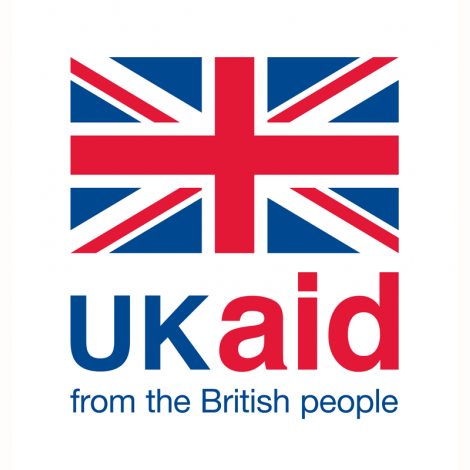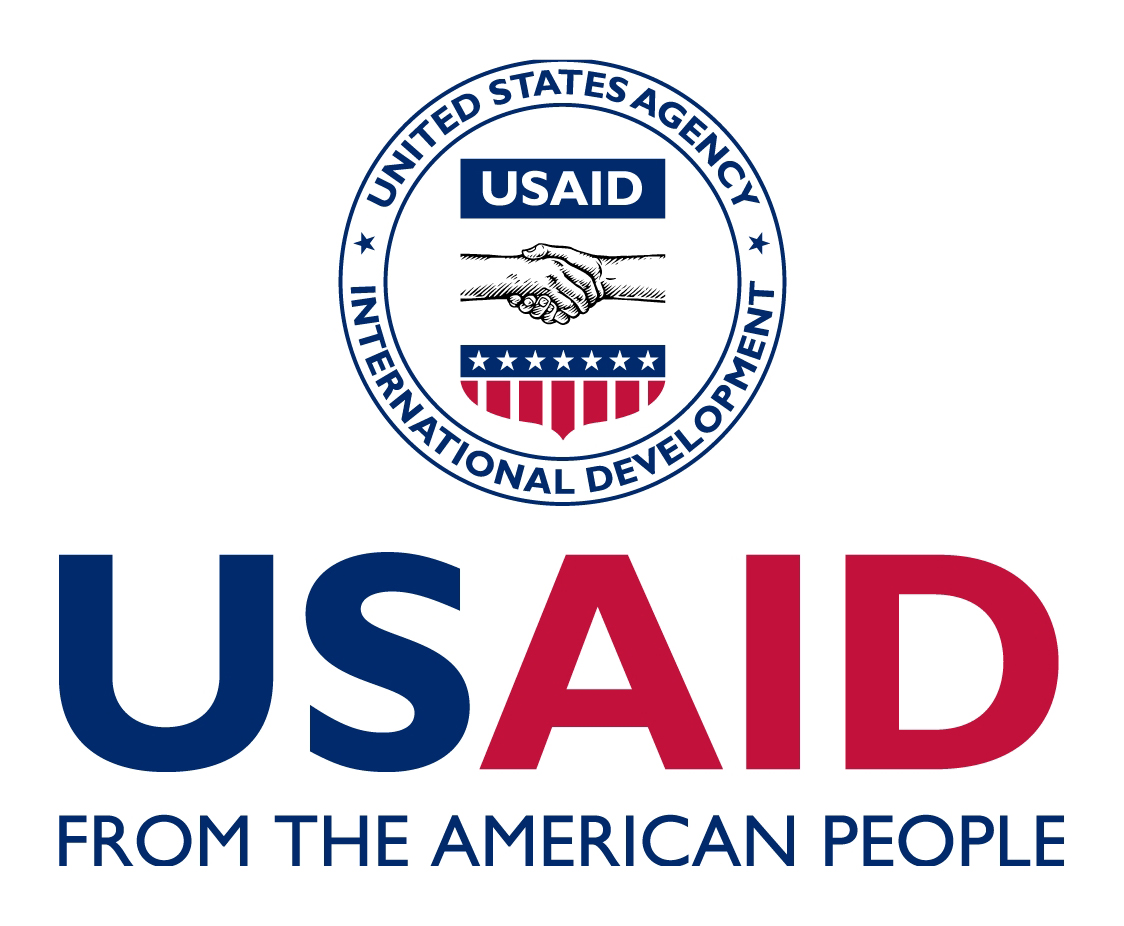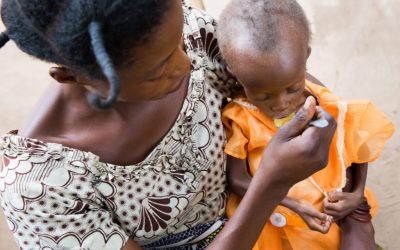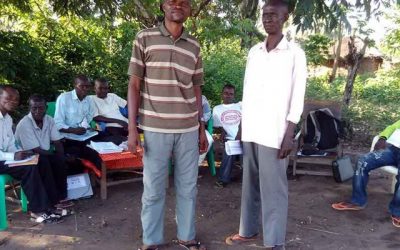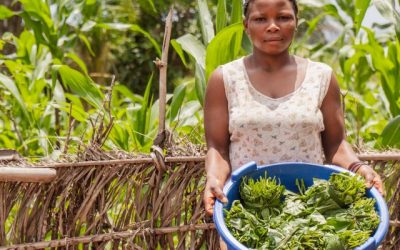Nutrition
Reducing morbidity and mortality due to malnutritionMalnutrition in the DRC
Malnutrition continues to be a critical health problem in the DRC. According to the 2013-2014 DHS, eight percent of children less than five suffer from acute malnutrition and chronic malnutrition rest at 43 percent. The MOH estimates that 51 percent of the child mortality in Congo is caused directly or indirectly by malnutrition.
IMA’s nutrition program in DRC has achieved monumental success in reducing malnutrition. It began during the ASSP project, when 8,900 community relays were trained to identify malnutrition in children in their communities. Each child identified as being malnourished then received five home visits from the community relays. During these visits the caretakers were taught how to make a therapeutic porridge from ingredients found in their local markets.
This program was then scaled up to all 40 health zones during the ASSR project. The result…
57% decrease in malnutrition
From April 2020 to March 2022, the prevalence rate of children 6 – 59 months, with a mid upper arm circumference of 12.5 cm or less, has decreased by 57%, falling from 12.3% to 5.3%.
One Story of Many
“Mado began to suffer when I became pregnant with my new baby, I thought it was a transient sickness like all the others but her health was only deteriorating. One day a neighboring boy who worked at the health center came to see Mado and then he went to give report to the center. Soon after an ASSP community relay came to see the condition of the child. She was not good. They taught me a recipe to make her in order to get her health back as quickly as possible. It was this porridge that I gave her, that of soy flour, corn flour and peanut meal all mixed up and that’s how she recovered her health.”
Maman Mado, Beneficiary of ASSP’s nutrition program, Kasai
Six months later mado was a different child.
And today…



Mado is only one of the 481,000 children who have recovered from malnutrition since the start of ASSP in 2013.
6.4 million children have been screened
More than 6.4 million children have been screened through ASSP and its follow on project, ASSR. For the last six quarters of ASSR, the majority of children with moderate acute malnutrition (MAM) and severe acute malnutrition (SAM) detected during screening received five follow-up home visits by community relays. During these follow up visits community relays taught caretakers how to make a therapeutic porridge from locally sourced ingredients. The result…
69 percent of screened children recovered from malnutrition by the fifth visit.
These results were achieved at an approximate cost of 7¢ per child screened and $1.73 per child recovered.
Key Achievements
Maternal Nutrition
During ASSP, the project ensured availability and routine administration of three doses of iron and folic acid for pregnant women at the health centers. Over the last four years, the number of pregnant women who have received five doses of iron and folic acid: 1,078,419
.
Child Nutrition
6.4 million children have been screened during ASSP and ASSR, and many more are to come via our new health systems project, SEMI.
Nutrition Training
19,840 health zone staff, nurses, and community health workers/relays were trained in IYCF messaging and home gardening during ASSP and ASSR.
IMPACT
57% decrease in malnutrition in project health zones. From April 2020 to March 2020, the prevalence rate of children 6 to 59 months, with a mid upper arm circumference of 12.5 cm or less, has decreased by 57 percent.
IMPACT
69% of children recovered by the fifth home visit. For the last six quarters, the majority of children with MAM & SAM detected during screening received five follow-up home visits by Recos, with a quarterly average of 69 percent of children recovering from malnutrition by the fifth visit. These results have been achieved at an approximate cost of 7¢ per child screened and $1.73 per child recovered.
ROUTINE DATA
Real-time data sourced from the DHIS2 data management system on the number of children who completed the nutrition program in ASSP-assisted health areas from 2014 to 2018.
DHIS2
Learn more about how ASSP helped the MOH improve routine health data by implementing DHIS2 in its health zones and beyond.
read more about our work to eliminate malnutrition in the drc
Publications
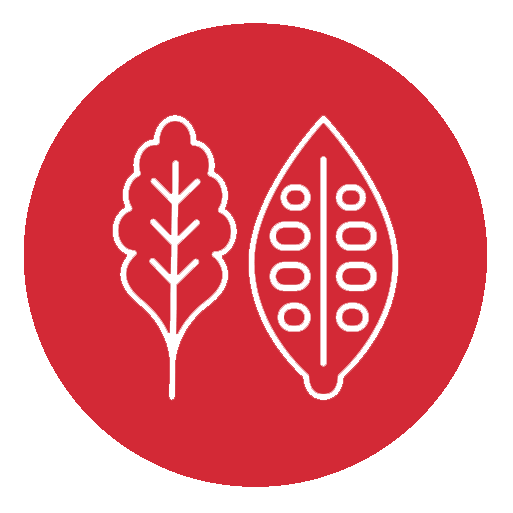
Nutrition
IMPACT: Nutrition during ASSR - June 2022 (pdf)
ASSR Success Story - Overcoming Malnutrition - June 2022 (pdf)
ASSR Nutrition Brochure - March 2022 (pdf)
ASSP Nutrition Brochure – September 2019 (English version) (version française)
ASSP Nutrition Success Stories – October 2018 (pdf)
Combatting Malnutrition in DRC: A Nutrition Success Story
Community relays in Ndesha, Kasai Central are successfully combatting malnutrition in the DRC...
IMA Addresses Malnutrition In DR Congo
Perseverance is an amazing quality! This describes so many in Congo who are involved in the Access...
ASSP Project Uproots Malnutrition with Household Gardens
As they sit quietly in front of their family’s hut in Congo’s Kasai-Occidental Province,...
QUICK CONTACTS
Recent Posts
Quarter 1 Results
Number of pregnant women who received three doses of IPT while attending antenatal care: 58,495Number and percentage of 1-yr-old children vaccinated against measles: 78,123Number of Couple Years of Protection (CYPs) achieved through family planning service provision:...
Saved by my Son: A Tushinde Ujeuri Success Story
"The support from the Tushinde program has restored my will to live." Tushinde Ujeuri Project brings hope to one survivor of sexual and gender-based violence in DRC It was mid afternoon, and my 10 year-old son and I were walking home from working in the fields. When...
Combatting Malnutrition in DRC: A Nutrition Success Story
Community relays in Ndesha, Kasai Central are successfully combatting malnutrition in the DRC thanks to ASSP's nutrition training. Combatting Malnutrition One Maman at a TimeMado Betu was a young child of two years and four months but was frail and unable to walk when...
